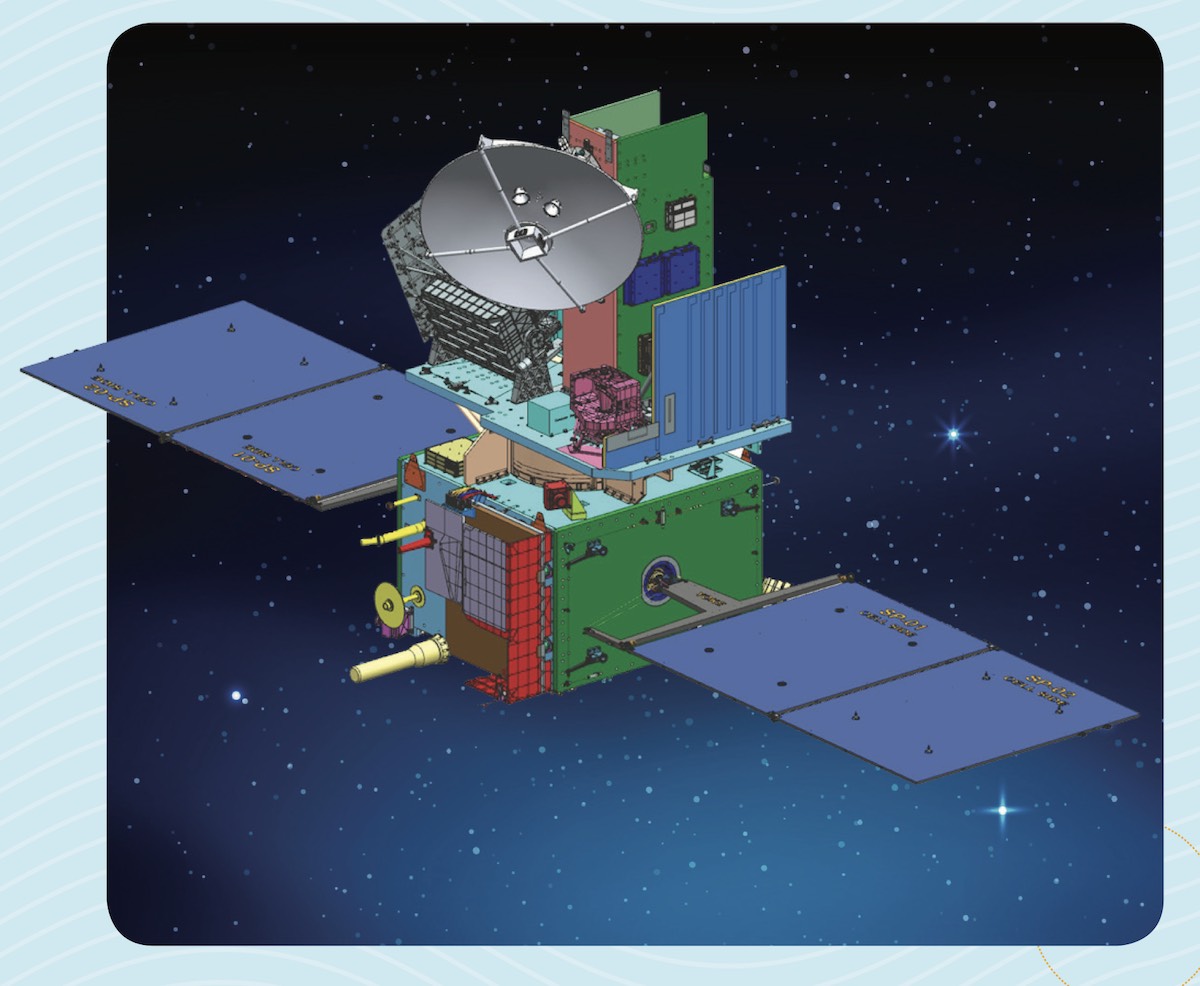
India launched a satellite Saturday to measure ocean winds and water temperatures, adding a key data source for weather forecasters tracking tropical cyclone development around the world.
The new ocean monitoring spacecraft, named EOS-06 or Oceansat 3, took off Saturday at 1:26 a.m. EST (0626 GMT) aboard a Polar Satellite Launch Vehicle, India’s workhorse rocket. The PSLV launched from the Satish Dhawan Space Center on India’s east coast, about 50 miles (80 kilometers) north of Chennai.
The 145-foot-tall (44-meter) PSLV launched in its most powerful configuration, called the PSLV XL, with six strap-on solid rocket boosters adding to thrust from a solid-fueled core stage motor. Four of the strap-on boosters lit as the rocket lifted off from the Indian spaceport, and two more boosters ignited 25 seconds later to give the PSLV maximum power of roughly 2 million pounds of thrust.
The rocket jettisoned the first four strap-on boosters about 70 seconds into the flight, then shed the two air-lit motor casings about 20 seconds later. The core stage burned out and separated at T+plus 1 minute and 48 seconds, and the second stage’s liquid-fueled engine took over the mission.
The second stage Vikas engine fired more than two minutes. The rocket released its clamshell-like nose cone during the second stage burn, revealing the EOS-06 spacecraft to the environment of space for the first time. Burns by the PSLV’s solid-fueled third stage and liquid-fueled fourth stage finished the job of placing the EOS-06 satellite into orbit.
The PSLV initially headed southeast from the Indian spaceport over the Bay of Bengal, then vectored its thrust to turn south over the Indian Ocean, a so-called “dogleg” maneuver to avoid flying over Sri Lanka. The rocket targeted a polar sun-synchronous orbit at an altitude of 458 miles (738 kilometers).
The EOS-06 satellite deployed from the PSLV’s fourth stage about 17 minutes into the mission. A live camera view from the rocket showed the 2,462-pound (1,117-kilogram) spacecraft cast free of the upper stage. Moments later, the satellite extended its solar panels to begin recharging batteries.
EOS-06, formerly known as Oceansat 3, was developed by the Indian Space Research Organization as a follow-up to India’s Oceansat 2 mission, which launched in 2009. EOS 6 will take measurements of ocean color, ocean winds, and sea surface temperatures with three on-board instruments.
S. Somanath, chairman of ISRO, said the rocket’s performance was “exceedingly good” after blastoff Saturday. He said the PSLV placed the EOS-06 spacecraft into its intended orbit “very precisely.”
“The health of the satellite is normal and its has started generating power,” said Thenmozhi Selvi K, ISRO’s project director for the EOS-06 mission. “Its applications include … weather forecasting, wind velocity, cyclone detection, cyclone tracking, maritime security.”
A 13-channel visible and near-infrared imaging system on EOS-06 called the ocean color monitor will scan the world’s oceans for algal blooms and map concentrations of phytoplankton that drive marine ecosystems. Ocean color data will also help scientists track water pollution, fish populations, and sediment distribution. The imager has a resolution of 1,180 feet, or 360 meters, and will provide global coverage every two days.

A thermal infrared instrument on EOS-06 will measure sea surface water temperatures, a major factor in the formation and strengthening of tropical storms, hurricanes, typhoons, and cyclones.
The satellite’s other ocean monitoring instrument is a scatterometer, a rotating Ku-band radar antenna that will bounce microwave radar beams off the ocean surface to determine the water’s roughness. Data processors can derive wind speed and direction from the radar returns, feeding information to meteorologists about conditions away from coastlines and buoys.
Similar scatterometer instruments are mounted aboard European weather satellites flying in polar orbit.
A NASA research satellite named QuikSCAT produced ocean wind data widely used in tropical cyclone forecasting, but its microwave radar stopped spinning in 2009. The scatterometer on India’s Oceansat 2 satellite ceased operations in 2014. A NASA scatterometer instrument launched to the International Space Station in 2014 stopped working in 2016.
There are differences in each scatterometer instrument — they do not all operate at the same frequency or in the same orbit. Forecasters prefer to have several wind-measuring satellites in orbit to cross-calibrate data, ensuring measurements are as accurate as possible. Once scientists confirm the accuracy of EOS-06’s wind measurements, the data could be used by forecasters predicting the formation of tropical cyclones.
India’s EOS-06 satellite also hosts an instrument for the U.S.-French Argos network to relay environmental data from remote weather stations and help track global wildlife movements.
After releasing its primary payload into space Saturday, the PSLV’s fourth stage fired thrusters to reduce its altitude to around 317 miles (511 kilometers), setting up for deployment of eight rideshare payloads.

The rideshare satellites included INS 2B, or India-Bhutan SAT, a joint project between India and Bhutan. The 40-pound (18-kilogram) spacecraft carries communications and optical imaging payloads.
A 36-pound (16-kilogram) satellite from the Indian remote sensing company Pixxel was also launched Saturday, along with two 3-pound (1.5-kilogram) Thybolt CubeSats for an Indian startup named Dhruva Space.
Four nanosatellites for a data relay constellation owned by the Swiss company Astrocast were also on the PSLV mission, known as PSLV-C54. The satellites grow Astrocast’s constellation to 14 spacecraft providing services such as tracking shipping containers, remote control of agricultural equipment, and remote monitoring of critical infrastructure. Spaceflight, a Seattle-based launch services broker, arranged for Astrocast’s satellites to ride on the PSLV mission.
The launch Saturday marked the 56th flight of an Indian Polar Satellite Launch Vehicle, and was ISRO’s fifth and final space launch attempt of 2022.
Email the author.
Follow Stephen Clark on Twitter: @StephenClark1.
